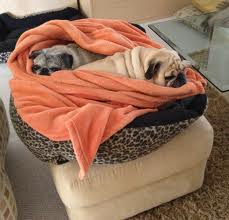Playing Your Best(ie)
 Wednesday, February 22, 2012 at 04:50PM
Wednesday, February 22, 2012 at 04:50PM  CAtennis
CAtennis  As an athlete participating in an individual sport, one of the most difficult things to handle growing up is playing against your best friend or doubles partner. The opportunities to practice against your peers are fairly limited - what with everyone having their own private coach and development that is heavily reliant on lessons.
As an athlete participating in an individual sport, one of the most difficult things to handle growing up is playing against your best friend or doubles partner. The opportunities to practice against your peers are fairly limited - what with everyone having their own private coach and development that is heavily reliant on lessons.
Few things are as traumatic for a young player as finding out that they have drawn their best friend, doubles partner or practice partner in the first round of the tournament. Knowing that one of you will go home and the other will go on can be quite nerve-wracking. However, as with bad line calls, rain delays, lack of warm-ups at a myriad other tennis issues, this one of those things that a player will have to learn to deal with in his/her life. After all, if you want tennis to be easy, trying playing against the ball machine with the net down. That's as easy as it gets. Master your nerves and you may just learn to utilize these skills later in life (e.g. attorneys who have graduated from the same class facing each other in court).
Here are some skills to assist you in dealing with the overwhelming emotions:
1. Does your best friend pay your bills? In other words, do you owe him anything? No?! Good. Then there's no reason to give him any more deference than any other opponent.
2. Regardless of who is on the other side of the net remember that, in tennis, you are really only playing the ball; ot the opponent (Bobby Knight: "You don't play against opponents, you play against the game of basketball)". Think of your best-friend opponent as an amalgamation of strokes: top-spin forehand; two handed backhand; kick-serve; weak volley; etc. Ignore the face and focus on his strokes and game-style. Figure out how to beat the game-style and stop worrying about the fact that you're about to beat your best friend. If you need help figuring things out, write a couple things about your friend's game-style (likes/dislikes) and read it over a couple of times.
3. The day before the encounter tell yourself: "I'm going to play the match tomorrow; I'll let her play the match tonight." In other words, don't lose the match before you've had the chance to spin for serve. Without a doubt, your opponent is as uncomfortable about the situation as you are. Let her sweat the match the night before. Take your mind off the match by focusing on other things that need attention (maybe cleaning up your room or reading a good book). Since you've played this person many times before, getting a good night's sleep is superior to fretting about the strategies. You know (or should know) what works and what doesn't (see #2 above).
4. To relieve some tension, you can try calling (or texting) your opponent and tell him something along the lines of "whatever happens tomorrow, you mean a lot to me and I have a great deal of respect for you. Any c'mons or les'gos are nothing personal." This will releave a great deal of tension during the match and you are likely to have a more positive experience.
5. Similar to #4, there's nothing wrong with applauding your friend's efforts during the match. The better he plays, the higher your own level. By laying well, he is actually doing you a favor by pushing you outside of your comfort zone. In the end, regardless of who loses, both of you will walk off the court better players. Playing against your BFF is also a great opportunity to practice sportmanship (which will make you a better person). As stated by Heywood Broun: "Sports do not build character. They reveal it."
6. Remember that, whatever happens, this will not be the end of the world. You will have many opportunities to compete against your friend so it might as well happen tomorrow. If you stick with this game for long enough you may even room with your friend in college and drive with her to tournaments where you may end up playing each other again. Learn to enjoy it. It will make you a better person.



